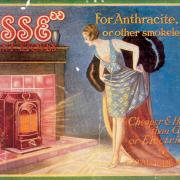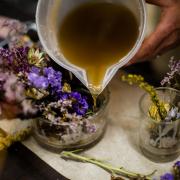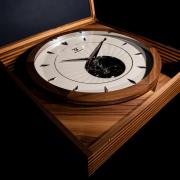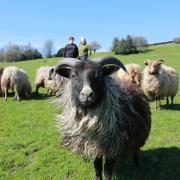Poinsettias are a feature of Christmas in many homes and thousands of them are grown in Hesketh Bank.
Few plants are as closely associated with Christmas as the poinsettia. Their cheery red bracts and deep green leaves are attractive additions to many homes at this time of year. And if there’s one brightening a windowsill in your home, the chances are it was grown at Hesketh Bank.
Arden Lea Nurseries has been a family business since it was established by John Taylor in 1949. He grew a wide range of flowers and vegetables on his one acre of land to sell at markets in Lancashire.
A fourth generation of the family now help run the business and they have 12 acres, producing hundreds of thousands of plants every year including the poinsettias that are an important part of the festive decorations for many people.
The plants start their life in Africa - mainly Ethiopia and Uganda - and are taken to Germany and Holland, where they are grown into small young plants before being shipped to the UK in June and July. They are then cared for by the Taylor family who allow the plants to take their course, they don’t force them, but give them space which gives the plants robustness and resistance as poinsettias are sensitive plants. By growing them this way they are as resilient as possible. They need darkness to turn the bracts - the leaves - from green to red, so as the days get shorter nature works her magic, nothing is rushed here.
John’s son Duncan is still involved in the business while the main day-to-day running is done by his sons Stuart and Nick who are now joined by a fourth generation, Nick’s son Sam.

Many of the poinsettias they grow are supplied to Booths and B&Q and Stuart said: ‘We work to live, not the other way around. In business it is so important to have a good working relationship with the businesses we supply and thankfully we have succeeded in that respect. You also have to move with the times and introducing machinery and mechanisation has proved invaluable. Poinsettias are more of a heritage part of our business but they are still a very important part, and one which we are immensely proud of.’
Over the years they have expanded their glasshouses which now cover 12 acres over several sites. During late spring and early summer they produce millions of bedding plants and make up hundreds of thousands of hanging baskets and planted pots.
And although the poinsettia is associated with this time of year, they are not just for Christmas.
Once the decorations come down, allow the poinsettia some time to rest and become almost dormant by reducing watering. The bracts will begin to look old and tired in late winter or spring but don’t worry if the leaves droop or fall.
In June, prune the plant back to about a third of its size, then repot it, stand it in good but not bright light and feed and water regularly to build a well-shaped plant.
From the end of September, ensure the plant has natural daylight rather than artificial light. Once there are more hours of darkness than light, the plant will begin to change colour. If you begin the initiation process at the end of September, you should start to see a subtle colour change by mid-October and the full transformation by the end of November.

Poinsettias and Christmas
A Mexican legend tells how poinsettias and Christmas came together. The story goes that there was once a poor Mexican girl called Pepita who had no present to give the baby Jesus at the Christmas Eve service. As Pepita walked to the chapel, sadly, her cousin Pedro reassured her tht even the smallest gift, given by someone who loves him would make Jesus happy.
Not knowing what to give, she picked a handful of weeds from the roadside and made them into a small bouquet. She was embarrassed by the gift but as she walked through the chapel to the altar, she remembered Pedro’s words and began to feel better. As she placed the bouquet at the bottom of the nativity scene, the bouquet of weeds burst into bright red flowers. Everyone who saw them was sure they had seen a miracle. From that day on, the bright red flowers were known as the ‘Flores de Noche Buena’, or ‘Flowers of the Holy Night’.
The shape of the poinsettia flower and leaves are sometimes thought to be a symbol of the Star of Bethlehem which led the wise men to Jesus.
ALL IN A NAME
They are native to Central America, especially an area of southern Mexico known as ‘Taxco del Alarcon’ where they flower during the winter. The Aztecs used the bracts to make purple dye for clothes and cosmetics. The flowers are yellow, small and inconspicuous found in the centre.
The first ambassador from the USA to Mexico in 1825, Joel Roberts Poinsett, had greenhouses on his plantations in South Carolina and on visiting the Taco region he became very interested in the plants and started growing them and sending to botanical gardens and friends. Their botanical name is ‘Euphorbia pulcherrima’ translated as ‘the most beautiful Euphorbia’.
HOW TO CARE FOR YOUR POINSETTIA PLANT
They should be protected as much as possible on the way home and unwrapped as soon as you get home, don’t leave them in a car for too long.
Poinsettias need protecting from cold and draughts. The roots need air as much as water, if they are white it is a sign they are healthy. The best way to water them is to stand them in water for about 20 minutes and then remove and allow to drain. Do not allow them to dry out completely but do not overwater.
To last as long as possible they need a light position and temperature of 16 to 18 degrees Celsius.



























